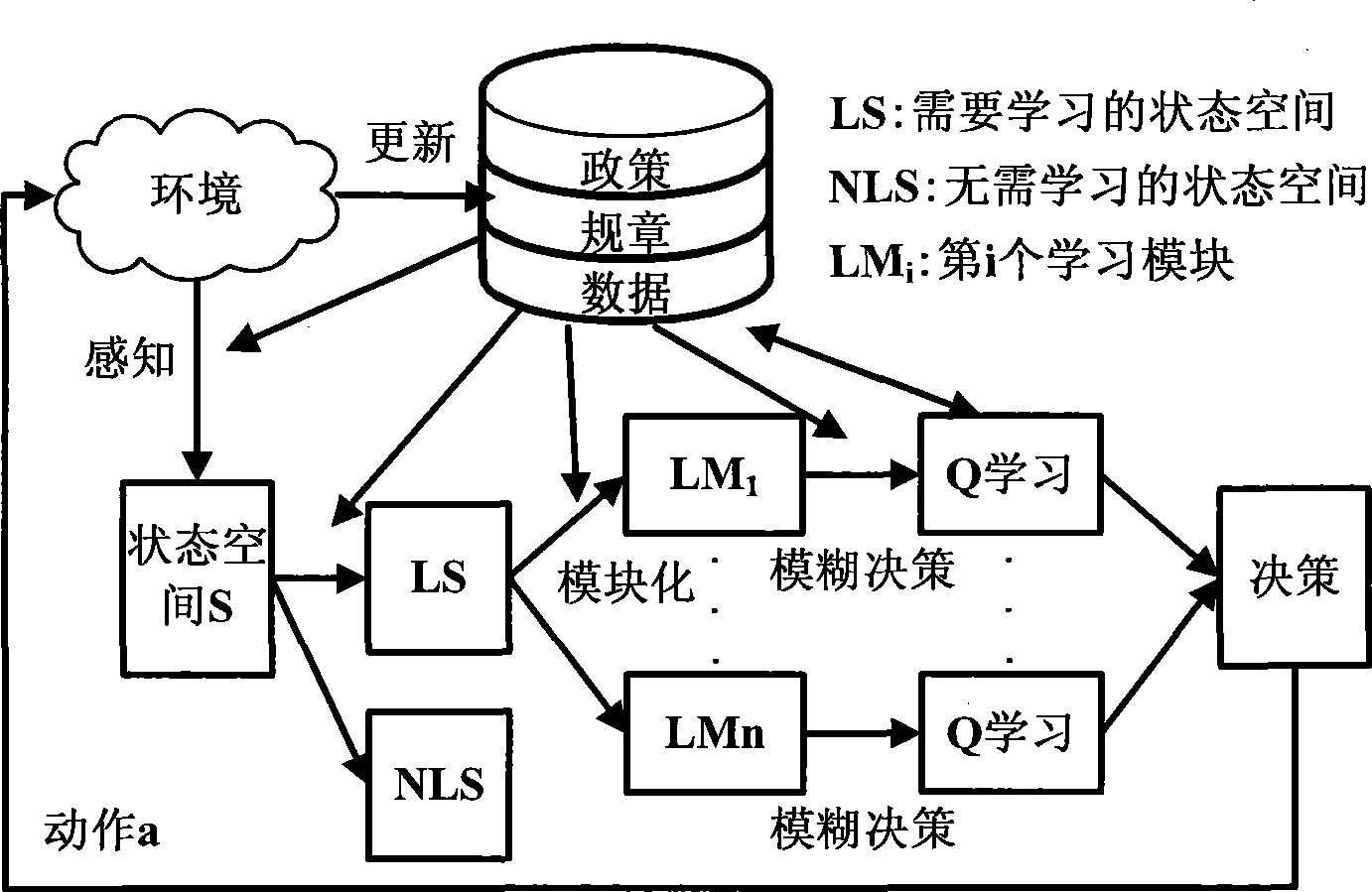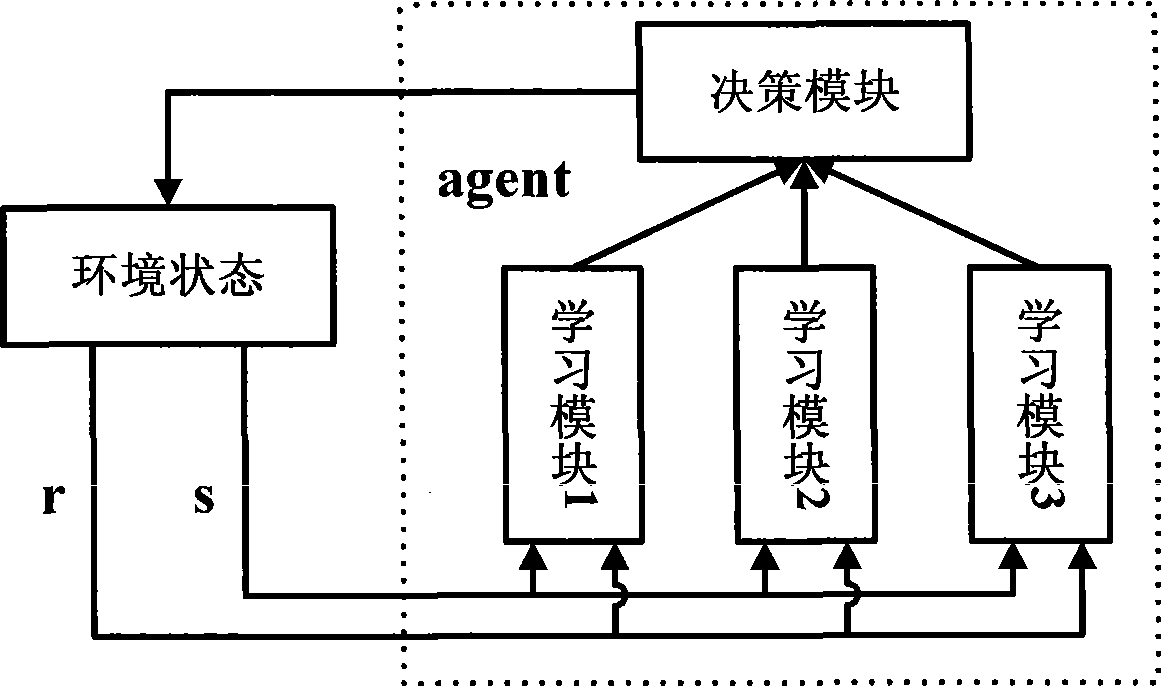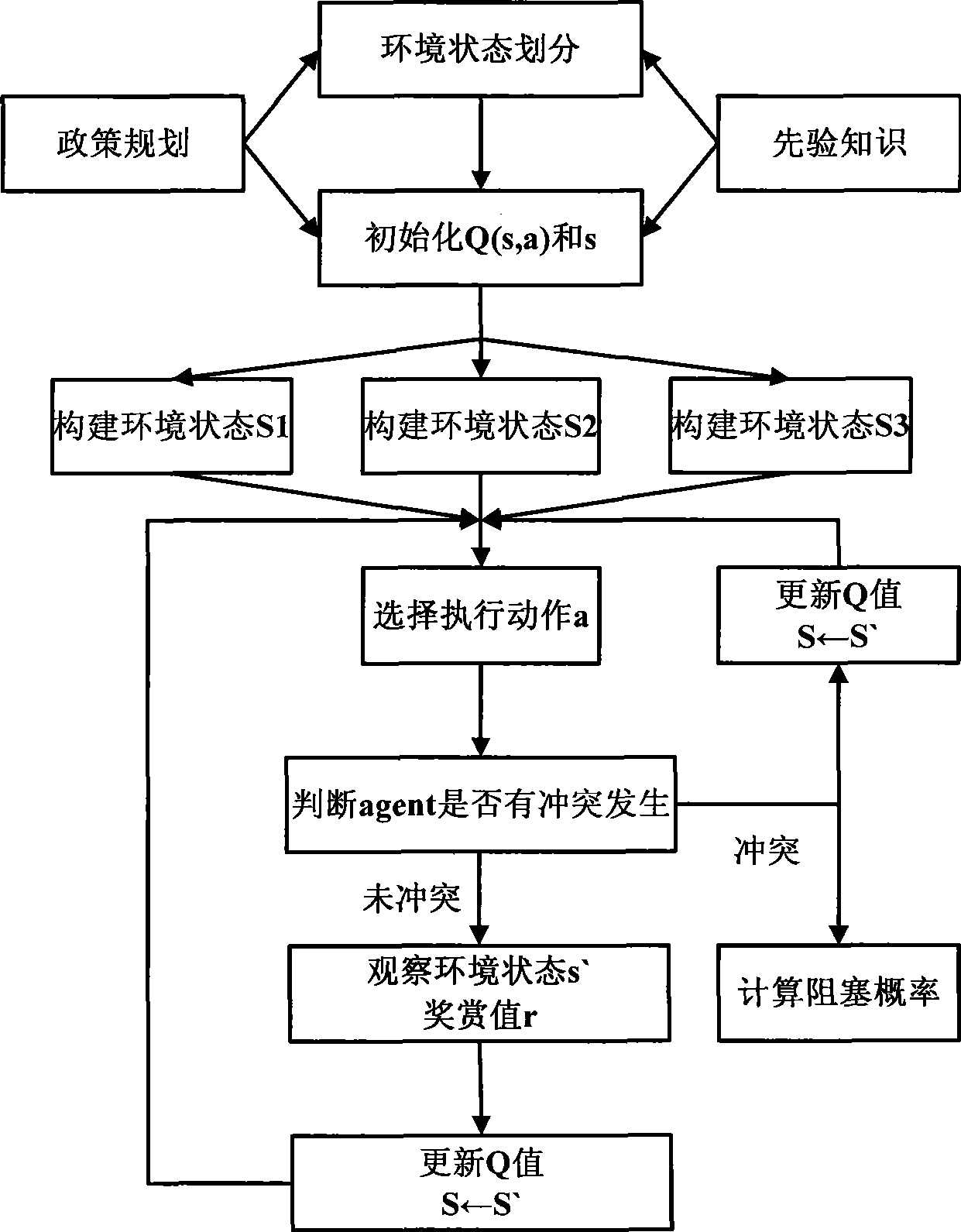Dynamic spectrum access method based on policy planning constrain Q study
A dynamic spectrum access and planning technology, applied in the field of cognitive radio, can solve the problems of Q-learning learning speed incompetence, low algorithm efficiency, and learning difficulties, so as to speed up the convergence speed, improve learning efficiency, and overcome blindness Effect
- Summary
- Abstract
- Description
- Claims
- Application Information
AI Technical Summary
Problems solved by technology
Method used
Image
Examples
Embodiment Construction
[0046] Such as figure 1 As shown, the agent selects the state space that can be learned in the state space according to the policy planning guidance, and hierarchically modularizes different state spaces, and initializes the Q table according to expert knowledge and prior knowledge; other parameters obtained according to the initialized Q table Q-learning is performed to obtain a dynamic spectrum access scheme with the minimum interference probability. The present invention considers policy planning constraints and realizes cognitive radio dynamic spectrum access, and its specific implementation steps are as follows:
[0047] 1. The agent perceives the state of the environment, and divides the state space under the guidance of the knowledge base containing policy planning and data, and eliminates the part of the spectrum that the policy planning does not allow cognitive users to use, and only senses the part of the spectrum space that the policy planning allows and learn to u...
PUM
 Login to View More
Login to View More Abstract
Description
Claims
Application Information
 Login to View More
Login to View More - R&D
- Intellectual Property
- Life Sciences
- Materials
- Tech Scout
- Unparalleled Data Quality
- Higher Quality Content
- 60% Fewer Hallucinations
Browse by: Latest US Patents, China's latest patents, Technical Efficacy Thesaurus, Application Domain, Technology Topic, Popular Technical Reports.
© 2025 PatSnap. All rights reserved.Legal|Privacy policy|Modern Slavery Act Transparency Statement|Sitemap|About US| Contact US: help@patsnap.com



